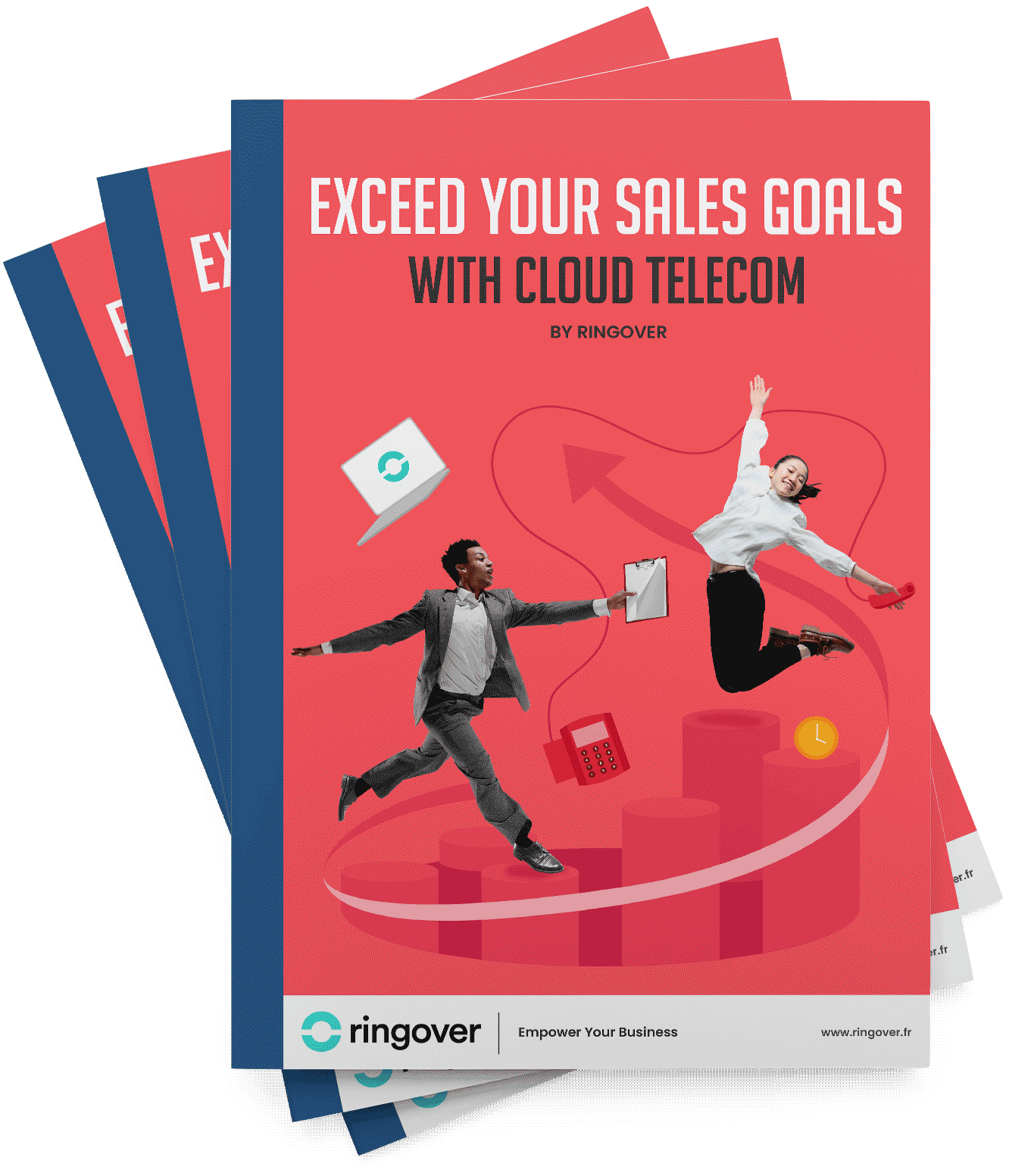Summary
By seamlessly integrating various communication, sales, and service channels, omnichannel communications offers a smooth and consistent customer experience while allowing companies to maximize their reach and influence.
How to deploy such a strategy? What tools to use?
Definition of an omnichannel marketing strategy
Omnichannel marketing is an approach that aims to provide a consistent and seamless customer experience across all channels, whether it is the website, social media, mobile apps, physical stores, etc. It is an evolution from multichannel marketing, where each channel operates in isolation.
With omnichannel marketing, the goal is to connect all touchpoints to create a sufficiently smooth journey for the customer. This involves having a 360° view of the customer to deliver the right message, at the right time, on the right channel.
Omnichannel marketing has become indispensable in a world where consumers are highly connected, heavily solicited, and use multiple devices (smartphones, tablets, computers, etc.) to get information, compare, and make purchases. Therefore, an effective omnichannel strategy is a key competitive advantage for brands today.

Steps to Develop an Omnichannel Strategy
The starting point for an effective omnichannel strategy is an in-depth analysis of customer journeys to understand when, where, and how they interact with the company. Identifying all possible touchpoints is crucial to provide a consistent experience.
The main steps to define an omnichannel strategy are as follows:
- Analyze customer journeys in detail to identify key interaction moments.
- Define the relevant channels and touchpoints for your audience.
- Integrate data from all channels to obtain an overall view.
- Establish measurable goals aligned with customer journeys.
- Design consistent and interconnected experiences across each channel.
- Continuously test and optimize to improve the strategy.
Analyzing customer journeys helps identify key interaction moments and the preferred channels of your audience. This deep understanding should guide the choice of channels and the design of experiences.
Integrating data from all touchpoints is also essential. CRM systems, websites, mobile apps, social media, and other communication channels generate valuable data that needs to be consolidated. This provides a 360° view of the customer to personalize experiences.
A successful omnichannel strategy seamlessly synchronizes all channels, allowing the customer to navigate their journey without friction.
What are the challenges of omnichannel marketing?
Omnichannel marketing presents certain challenges for businesses. We have listed the main ones to help you anticipate them when deploying your omnichannel strategy:
Channel Fragmentation
Businesses must manage numerous channels. These can include physical stores, one or more websites, mobile apps, social media, communication channels, etc. Providing a consistent experience across all these channels, each with its own specifics, can be difficult. There is also a risk of information silos, with teams in charge of these channels working in isolation.
Data Integration
To offer an omnichannel experience, businesses must integrate customer data from multiple sources (points of sale, CRMs like Salesforce or Hubspot, web, mobile, etc.). This requires significant technological investments. Without data integration and synchronization, it is impossible to have a 360° view of the customer.
Complex Logistics
Depending on the business and the projects, omnichannel logistics can involve options like click & collect or same-day delivery, which can be quite complex to manage. This requires close coordination between digital teams, physical stores, and logistics.
A Hard-to-Measure Short-Term ROI
If starting from scratch, implementing an omnichannel strategy requires significant investments in technology, processes, team training, etc. The return on investment (ROI) can be difficult to measure in the short term.
The benefits of a good omnichannel strategy
Despite the challenges outlined above, omnichannel marketing offers numerous advantages, including:
- Consistent customer experience: Customers benefit from a consistent and connected experience across all channels, which strengthens loyalty and trust. Omnichannel marketing allows for delivering the right message at the right time, regardless of the touchpoint.
- Increased loyalty: By providing a personalized and seamless experience across all channels, brands increase customer loyalty and customer lifetime value and decrease churn. Data collected from various channels helps better understand customers.
- Sales uplift: Omnichannel marketing generates more conversions by multiplying touchpoints with the customer. It also optimizes the purchase journey by allowing customers to easily switch between channels to finalize their purchase.
Focus on omnichannel communication
An effective omnichannel communication strategy requires coordinating your messages across all channels to provide a consistent experience to customers. Solutions like Ringover can help synchronize your communications across phone, chat, social media, emails, etc.
Ringover is a cloud telephony solution for internet-based calls that also integrates a video conferencing tool. Integrable with your customer relationship tools, it allows making and receiving calls via landline, mobile, or web browser, as well as sending text messages. The conversation history is centralized, giving agents a 360° view of the customer.
Ringover stands out with its automatic call transcription feature, which allows customer-facing teams to save time on each case.
With Ringover, agents can seamlessly switch between channels during a conversation. The solution is complemented by an omnichannel feature that combines SMS, Google reviews, emails, WhatsApp messages, Messenger, and Instagram messages exchanged with customers.
Managers can also monitor all interactions in real-time, and record them for analyzing the quality of exchanges. They can thus identify areas for improvement.
Designed to enable companies to optimize their customer relations, Ringover is available in a free version, requiring no banking details.
Implementing an omnichannel marketing strategy: key takeaways
Omnichannel is essential for providing a consistent and connected customer experience across all channels. By aligning the strategy across all touchpoints, brands can create smooth and painless journeys that increase satisfaction and loyalty.
The keys to success are offering relevant content, personalized experiences, real-time interactions, and consistent communication. Having a 360° view of the customer is crucial.
To implement a successful strategy, it is essential to define clear objectives, understand customer behavior, collect and analyze data, and then measure the results. You can achieve this by aligning your various customer relationship tools through integrations.
In most sectors, adopting this omnichannel approach is inevitable to remain competitive and meet the expectations of today's consumers. Ringover can help you with that.
Discover how Ringover's omnichannel communications can make a difference by beginning your free trial today!
Omnichannel Marketing FAQ
What is omnichannel content?
Content is a key element of a successful omnichannel marketing strategy. It must be consistent across all channels, but also tailored to each of them. The content will be different on a website, social media, via email, etc.
Alignment must therefore be achieved along with careful consideration to produce optimized and relevant content for each channel.
What is the omnichannel customer experience?
Above all, it's a seamless customer experience across different communication channels used. The goal is to allow the customer to interact with the brand whenever they want, wherever they want, and however they want.
To achieve this, it is essential to focus on the customer journey. This means there must be continuity in the customer experience, whether in-store, online, on mobile, or via social media. Each interaction must fit into an overall strategy.
What KPIs to follow to measure the effectiveness of an omnichannel strategy?
Measuring the effectiveness of an omnichannel marketing strategy is essential to understand its impact on your business. It is important to define relevant KPIs and implement a complete process of analyzing the results.
Through this omnichannel analytics, you will have an overview of the scope of the actions taken to streamline the customer journey and identify any potential.
Here are some important metrics and KPIs to follow:
- Conversion rate by channel: allows you to know the most effective channels for the prospect > customer conversion.
- Acquisition cost by channel: indicates the average cost to acquire a new customer on each channel.
- Omnichannel attrition rate: measures the proportion of customers lost after interacting via your omnichannel platform.
- Revenue generated after the customer has interacted on at least two different channels.



